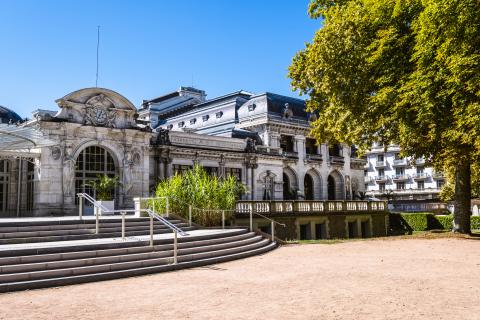
Casinos and spas: a musical life that set the tone
Historians from all disciplines (music, tourism, architecture, seaside tourism, holidays, gambling activities, etc.) are taking over a still largely unexplored field of research: the musical life of French casinos from the 19th century to the present day. This research is revealing all the historic subtleties of these places that are at the intersection of entertainment, societal life, art… and balneology.
A hubbub of rattling and ringing escapes from a row of slot machines against a backdrop of rhythmic music. Anyone who has ever entered a casino will have been struck by the atmosphere of the place. It is hard to imagine that this has not always been the case, and that in France, at a time not so long ago, these gambling establishments were important cultural and artistic spaces and flourishing venues for concerts of classical music and opera in particular, before evolving into the musical forms we know today.
How and why did these gambling establishments decide to set up music venues on their premises? What repertoires and musical genres did they favour and how did they evolve? What role did casinos have in the dissemination of these musical genres and what role did they occupy in the evolution of the careers of musicians and performers? ... Such questions as this interest Martin Guerpin, a musicologist in the Research, arts, entertainment, music laboratory (RASM CHCSC – Université Paris-Saclay, Univ. d’Évry), in partnership with Jean-Claude Yon (École Pratique des Hautes Etudes EPHE), Étienne Jardin (Palazzetto Bru Zane, the French Romantic Music Centre in Venice, Italy), and the team of eight musicologists, historians of tourism, architecture, holidays, seaside tourism, gambling, law and music that he gathered around him to carry out this research. “We have focused on rebuilding the musical programming of French casinos, from the end of the 19th century to the present day, but also on understanding the social, cultural and economic rational that shaped its evolution,” says Martin Guerpin. Research work started in 2018 thanks to the support of the MSH Paris-Saclay, and the first conclusions are now being published.
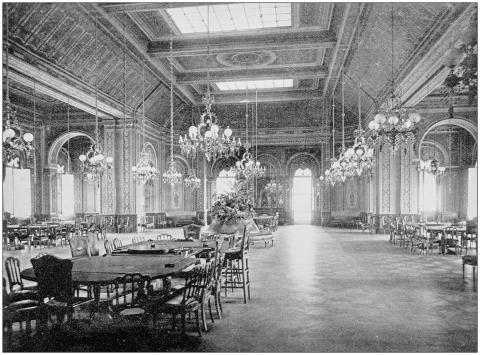
When balneology and gambling were connected
The musical life of the casinos, still a little-known chapter in the history of music in France, has been revealed to have been, to a certain extent, inseparable from the life of seaside and spa resorts and the evolution of the clientele received by the spa establishments. Trying to trace this evolution back involves first of all documenting it well, by locating and collecting archives of casinos, musicians' writings, visual archives, etc. This is a long-term project led by the team that is feeding - and completing - the Inventaire général du patrimoine culturel (General inventory of cultural heritage), and more particularly the census of seaside tourism and resort heritage, led by the Ministry of Culture and implemented by the regions since decentralisation in 2005.
Music first appeared in casinos in the early 19th century. It emerged thanks to Imperial Decree No. 1671 promulgated under the First Empire by Napoleon Bonaparte – himself a fan of thermal cures which he took at Bourbonne-les-Bains, Aix-les-Bains and Plombières – which authorised gambling in places with mineral waters.
The need to entertain those taking the waters
Thereafter, the fashion of thermal cures grew and in the early 1860s up until the First World War, France experienced a fever for thermal cures. Under the impetus of Napoleon III, the traditional seaside resorts were enlarged, many more were created and prestigious thermal baths, such as those in Deauville, Trouville-sur-Mer and Nice, emerged.
“During the Second Empire, cures lasted from a few weeks to almost three months,” explains Martin Guerpin. Enough time, without any entertainment, to feel a little lengthy. To ward off the boredom that the spa clients regularly complained about on their postcards home, casinos came to serve as a place of entertainment to occupy them during their long months spent in these spa towns.
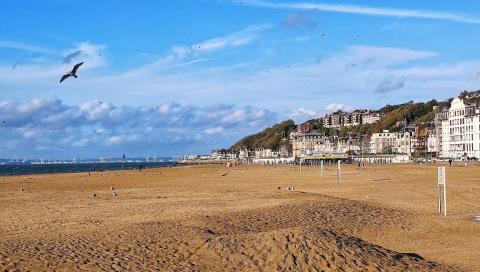
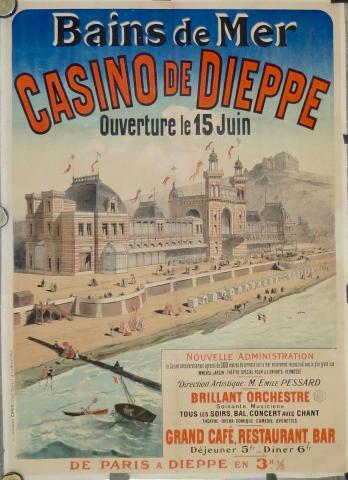
In these nearby casinos, “the people who go to the thermal spas need to get back to the music they are used to listening to.” Logically, there was classical music, chamber music, opera, operetta and music hall. These musical genres were the preference of the seaside and spa clientele of the time, who were mostly of aristocratic origin. From the end of the 19th century, in a large number of French casinos, major performances of symphonic music and opera took place.
In Monte-Carlo, for example, the Casino Theatre – built to replace the one added in 1866 to the casino opened by François Blanc, founder of the Société des Bains de Mer (SBM) – planned its first opera season in 1879. The choice of the works performed was rather cautious; it was above all a question of entertaining the players and keeping them as long as possible at the gambling tables. It was between 1893 and 1951, under the direction of Raoul Gunsbourg, that the concert hall enjoyed its most original and daring opera programme, with numerous French premiers and creations and the inclusion of the most beautiful voices of the time – both French and international.
New musical genres emerge
After the First World War and between 1920 and 1930, a second fever for spa cures invaded France. “It was about treating the wounded of the Great War.” Attendance at the thermal baths and the casinos by a clientele still belonging to a wealthy elite, dictated the rhythm of the musical seasons. “This is the golden age of casinos: the most beautiful opera seasons were programmed, with orchestras sometimes including a hundred musicians and the best singers of the time,” stresses Martin Guerpin. In Vichy, a hotspot for spas, the well-to-do classes of spa cure clients in the spa town could enjoy opera and comic opera in the Grand Casino theatre inaugurated in 1901, or operetta in the concert hall of the Casino des Fleurs built in 1913, or music hall in the Elysée Palace built in 1898, or boulevard comedy at the Petit Casino that opened in 1926.
At the same time, jazz arrived in France, and in the casinos it began to cohabit with other musical genres. “As the goal of casinos was to be fashionable, and as jazz began to develop, it is logical that we begin to find it in their musical programming. They wanted serve the customers the music of the moment!” indicates Martin Guerpin.
But after the Second World War and up to the 1970s, the fashion for thermal cures slowly ran out. However, with the introduction of the reimbursement of cures by French Social Security, a new clientele from the middle classes flocked to the spas and took over the casinos. “This clientele benefiting from social thermal cures did not listen to classical music or opera. These musical genres were disappearing from musical programming, in favour of variety, rock, jazz and musicals,” reports Martin Guerpin. Again, casinos adapted quickly.
Playing on the emotions
In the 1980s, another upheaval took place: the first slot machines made their entrance into gambling establishments. They allowed clients to gamble on a smaller scale. This more obvious democratisation of gambling opened the casinos up even more to a popular clientele, and influenced the type of music that was broadcast there. “The slot machines started producing music, because casinos use the music culture of their customers. Some machines took a particular music group as their theme. As music influences our emotions, the idea was to encourage people to stay on the machines as long as possible. This is neuromarketing,” says Martin Guerpin. This trend continues today, although concerts have not disappeared completely from casino music programming, outside of the Covid-19 pandemic.
In full emergence, the musical history of the casinos reveals cultural and artistic riches that have remained hidden for a long time, which the research team is still trying to better analyse. All of which changes the way we will see casinos from now on.
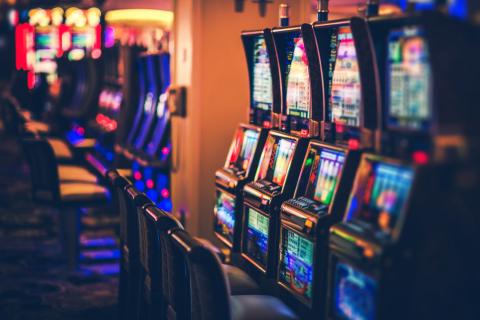
References:
- Martin Guerpin. La vie musicale dans les stations balnéaires et thermales (1880-1960) : Jalons pour une histoire de la musique dans les casinos (Musical life in seaside and spa resorts (1880-1960): Milestones for a history of music in casinos). Revue d’histoire du théâtre, n°275 (2017).
- Martin Guerpin, "Du remède contre l'ennui à la politique du faste: l'opéra français dans les casinos" (From the remedy against boredom to the politics of pomp: French opera in casinos), Histoire de l’Opéra français (Vol. 2, Du Consulat aux débuts de la IIIe République), Paris, Fayard, 2020, p. 46 62.
- Martin Guerpin, "La vie lyrique dans les casinos français (1900-1939)" (Operatic life in French casinos), Histoire de l’Opéra français (Vol. 3. De la IIIe République à nos jours), Paris, Fayard, 2021.
- Martin Guerpin, "Du théâtre du casino à l’Opéra de Monte-Carlo (1893 1945)" (From the Casino Theatre to the Monte-Carlo Opera), Histoire de l’Opéra français (Vol. 3. De la IIIe République à nos jours), Paris, Fayard, 2021.
- Martin Guerpin, "Vichy sous Vichy, une nouvelle capitale lyrique (1900 1944) ?" (Vichy under Vichy, a new operatic capital?), Histoire de l’Opéra français (Vol. 3. De la IIIe République à nos jours), Paris, Fayard, 2021.
